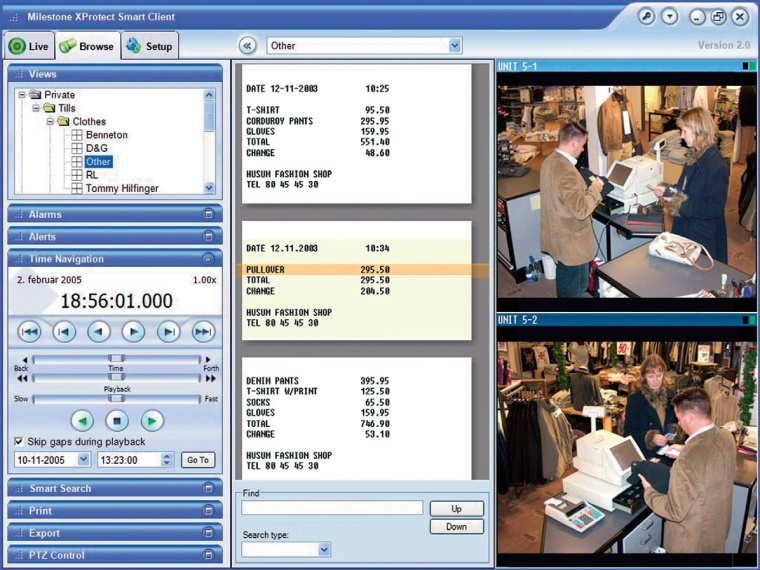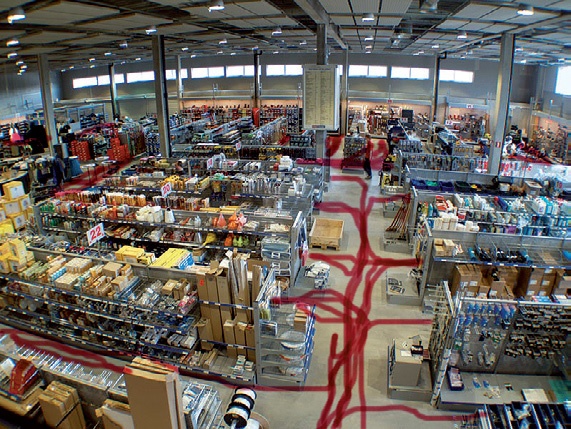Axis Communications: network video surveillance is not only about security
Axis Communications: network video surveillance is not only about security. Retail today isn’t an easy task. The overall economic downturn has led to fiercer competition, decreasin...



Axis Communications: network video surveillance is not only about security. Retail today isn’t an easy task. The overall economic downturn has led to fiercer competition, decreasing demand and aggressive pricing in the retail sector. To be more competitive, retailers need to cut down costs, improve top-line revenues and optimize in-store processes. Their small profit margins make retailers especially vulnerable to shrinkage and affect their bottom line as they often experience losses equating to 20–40% of their profits. Recent reports such as the “Current Crimes Trends Survey” have revealed a strong correlation between the increase in retail crime and the economic downturn.
Security as a Competitive Edge
As the survey from Asis International (2009) “Impacts of Current Economic Environment on Security” indicates (see: www.asisonline.org/ membership/economicsurvey.pdf), the global financial turmoil and its effect has increased the need for security. ‘In this environment shrinkage could become a serious problem for the already strongly affected retail industry’, explains Johan Åkesson, director of business development, retail at Axis Communications, the global leader in the network video market.
‘Retailers that invest in cost effective network video solutions will be able to thwart shrinkage on all levels where it occurs, optimize their bottom line revenues and better confront the economic downturn.’
With Network Video Integration Is an Easy Task
Network video surveillance offers a holistic Loss Prevention solution as it combats shrinkage on all levels where it occurs from fraud at the check-out, via in-store or staff theft to inaccuracies in the distribution center. Because network video systems are generally built on open standards, they can be easily integrated with other your other retail systems, e.g. the point of sale (POS) software.
By linking video images from the checkouts with the corresponding transaction data and setting user-defined rules, the system points out specific types of transactions deemed to be suspicious or unusual, such as a large amount of manually entered values, unauthorized discounts given to customers or granting returns when there is no item returned.
But network video solutions can do even more. By combining data from your point-of-sale registers with surveillance analytics retailers can determine a store’s conversion rate down to an item level. Trends in employee performance such as daily efficiencies can also be tracked, indicating the need for additional training or other factors impacting cashier effectiveness.
With the embedded analytics in network video cameras, retailers can not only observe customer behavior in-store, but garner real-time statistics to help improve store layout, product and display placements, and even identify bottlenecks and dead areas on the floor.
Unlike the hit-or-miss approach of customer surveys and mystery shoppers, network video gives an accurate and unbiased report of the immediate situation and of changes over an extended period of time.
Network Video as a Marketing Tool
Because the surveillance video is streamed over the network, multiple departments can securely share views of store activity in real time. Store managers can compare analytics between multiple stores for a range of activities – from customer traffic to sales statistics. A network-based video surveillance system makes it easy to identify a store’s hot spots, dead zones and bottlenecks.
Heat maps that visualize customer traffic for selected time periods are quickly generated and provide invaluable input for store design improvements. After changes are made to the store layout, the system allows retailers to immediately evaluate the impact on customer flow, sold items, average sales amount and other factors.
Retailers can furthermore test the effectiveness of promotional campaigns, in-store advertising and signage by studying the customer flow captured on surveillance video. The addition of analytic tools to the surveillance system enable to measure the “dwell time” customers spend in front of a sign or display. These analysis applications provide a number of key performance statistics, including average viewing time, distribution of viewing time and number of shoppers viewing during a selected time period.
With strategic deployment of intelligent network cameras throughout the store retailers can slash that viewing time by allowing the camera to automatically analyze the video data. Intelligent video surveillance systems use complex mathematical algorithms to extract moving objects or other recognizable forms from the recorded video, while filtering out irrelevant images or movement.
Intelligent decision-making rules govern the data search to determine if the activity recorded in the video should be flagged for further review. To summarize, network video solutions used as a loss prevention tool help retailers to effectively combat shrinkage. But applications that go beyond mere security give retailers opportunity to leverage some truly powerful in-store intelligence.
Network video systems provide an efficient and unbiased way to analyze customer behavior and shopper traffic. The technology makes it possible to evaluate and compare merchandising and marketing initiatives at a single store or throughout a chain. ‘With strategic application, network video gives store managers the real-time insight they need to optimize store layout, product placement and advertising to enhance your shoppers’ experience, which helps retailers to improve their bottom line’, explains Johan Åkesson. ‘This can help retailers to better confront side effects of the current economic situation such as fiercer competition, decreasing demand or aggressive pricing in the sector.’
The Advantages of Intelligent Video in Retail
There are numerous advantages to processing as much of the video as possible inside the network cameras or video encoders. For instance, putting intelligence at the edge helps retailers to:
- 1. Minimize bandwidth usage – Cameras and encoders can be programmed to only transmit video when they detect motion in a defined area of a scene. This dramatically reduces bandwidth consumption and the number of operators needed to review transmissions. For instance, they can extract a headcount from a frame and send just the essential data with a few snapshots instead of consuming bandwidth with several hours of unfiltered video.
- 2. Reduce server costs – In centralized surveillance architecture, servers typically process four to 16 video streams. When cameras do the processing, servers can handle more that 100 video streams. For people counting applications, for example, the resulting data (rather than the video stream) can be sent directly into a database, further reducing the load on servers.
- 3. Improve surveillance analysis – When network cameras process raw video data before it is degraded by a compression format, the quality of analysis greatly increases. This configuration also reduces the number of servers required to process the transmission because fewer video packets are actually sent along the network for uncompressing or transcoding prior to processing.
- 4. Lower operating costs – With fewer servers needed, power consumption and maintenance costs drop. This also removes the burden from environments without server rooms to build special facilities to support their surveillance networks.
- 5. Lower equipment investment costs – Reducing network bandwidth usage by streaming only essential information (metadata and snapshots) gives retailers the option to deploy more moderatelypriced network components that can easily support reduced data rates.
Johan Åkesson
Contact:
Dominic Bruning
Axis Communications,
Preston, United Kingdom
Tel.: +44 870 1620 047
Fax: +44 870 7778 620
dominic.bruning@axis.com
www.axis.com
most read

GIT SECURITY AWARD 2026 - The winners have been announced!
GIT SECURITY AWARD 2026: The best safety and security solutions of the year - now an overview of all winners

Security management, building security & perimeter protection: the winners of category E at the GIT SECURITY AWARD 2026
GIT SECURITY AWARD 2026: Security management, building security & perimeter protection - an overview of the most innovative solutions

When the Internet stumbles: Why DNS is important
When DNS fails, the internet stumbles-AWS outage proves resilience and redundancy are vital for digital trust

Machine & plant safety: The winners of category A at the GIT SECURITY AWARD 2026
GIT SECURITY AWARD 2026: Machine & plant safety - an overview of the most innovative solutions









